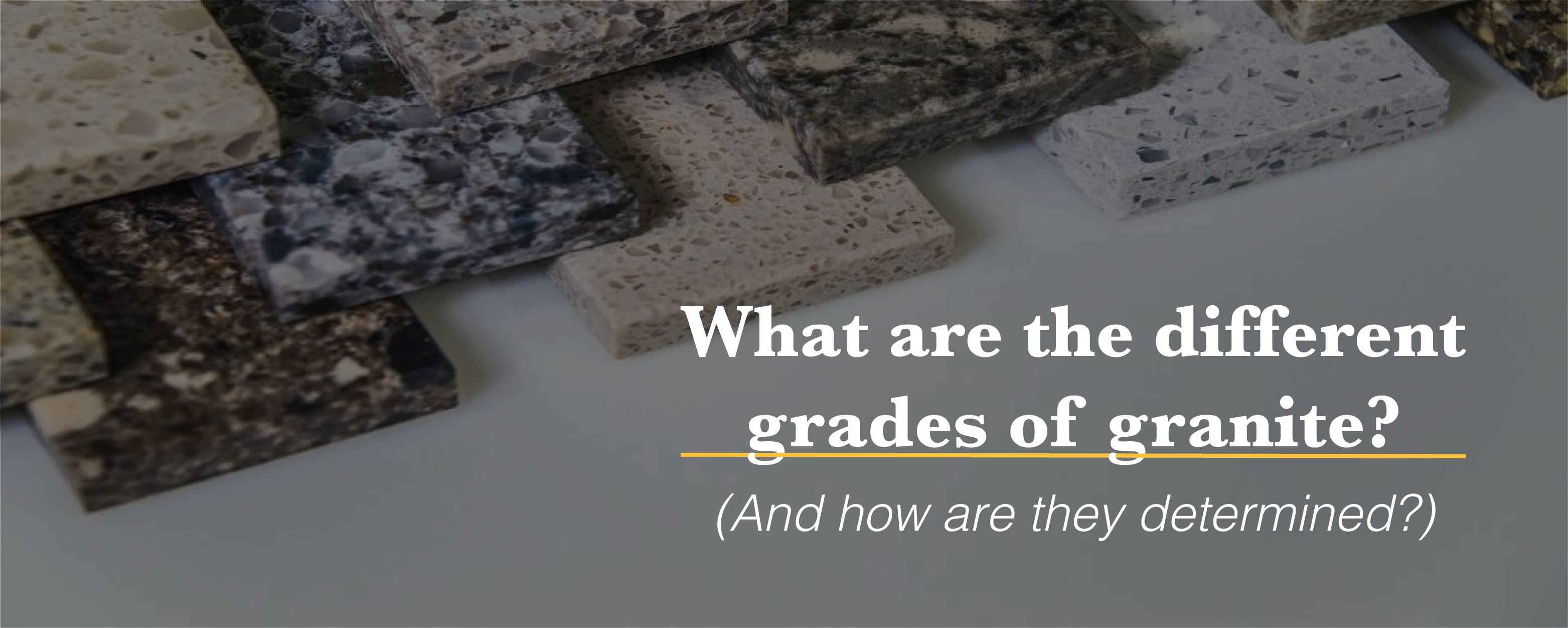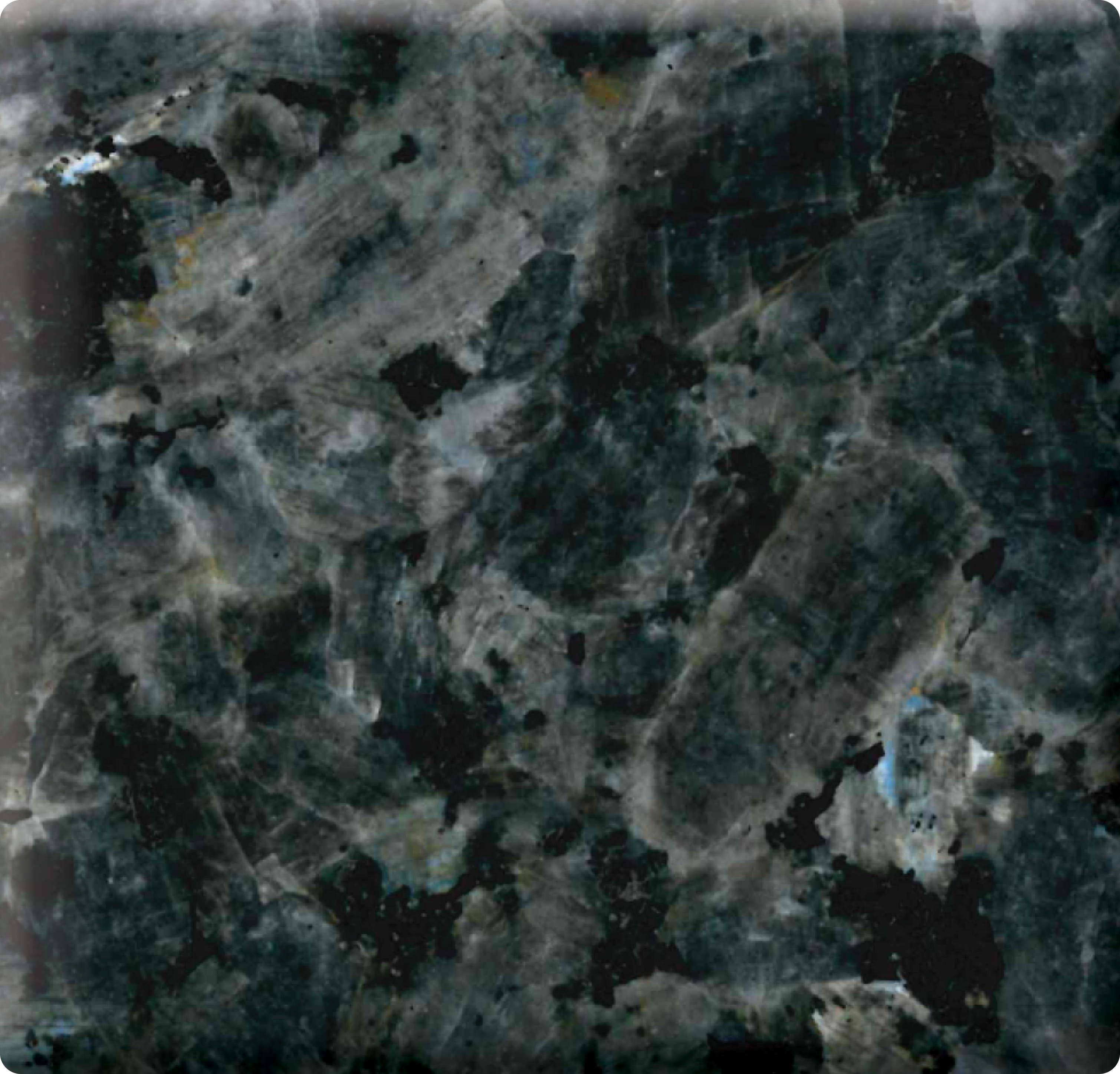Granite is a natural stone and the most popular igneous rock to use for countertops. But not all granite is equal.
Granite has different 'grades' that refer to the structural quality of the stone. Each grade helps determine how much it'll cost, how durable it will be, and what it will look like.
There are (usually) three levels of granite: Level 1, Level 2, and Level 3+. Level 1 being the lowest and level 3+ being the highest.
In this blog, we're going to go over how granite is graded, what each granite level includes, and how to choose the right granite for your project. Let's get into it.
What determines a granite's grade?
You might be wondering, "how is granite graded?"
There are several things manufacturers and dealers look at to assign a granite grade to a slab of granite.

Veining, pitting, colors, thickness, composition, and even the country it was sourced from all help identify what grade the granite is in.
However. Before we get into it, it's important to note there is not an industry standard for these grades and most suppliers use an in-house system for grading. Although these systems are usually very similar, there will be some discrepancy between vendors. What's level 2 to one wholesaler might be level 1 for another.
Here's a bit on each factor to get you started:
1. Visual appearance
Often times, you can tell the quality of granite simply by looking at it. Cool color? Lots of veining? Unique patterns? It's probably a higher grade.

A higher grade granite because of the variation and veining
Some colors are even rarer than others. For example, blue granite is going to be rarer than browns and beiges. And the rarer the granite is, the more expensive and therefore the higher the grade.
2. Granite origins
Granite is a natural stone that comes from all over the world. Today, most granite comes from Brazil, India, China, and Canada.
While granite from one place isn't necessarily better than that of another, it does impact the cost.
Granite from China usually comes at a lower resale cost because of lower labor costs. Whereas granite from Brazil will be a little more expensive. And typically, the more expensive the higher the grade.
3. Granite thickness
Granite countertops come in different thicknesses.
This happens because granite is a natural material and is cut from the Earth as gigantic slabs. After it's extracted, it's then sent to manufacturers to be cut into smaller, thinner pieces.

Diamond wire and gang saws are used to cut through the rough blocks of granite in order to produce slabs of stone that are uniform in size.
Most slabs are cut to either 2cm or 3cm.
Even though granite is one of the most durable natural materials (right next to diamonds), a thicker slab (3cm and up) makes for a less fragile countertop.
Thinner slabs are considered less durable, which lowers the grade.

Top pic is a thicker granite, bottom pic is a thinner granite
4. Granite porosity
Granite consists of feldspar and quartz with minor amounts of mica, amphiboles, and other minerals. Based on the stones and minerals that make up your granite slab, the porosity and absorbency can vary. The more absorbent granite is, the more porous it is, and therefore the more sealant it will need.
In summary, higher grade granite will feature fewer imperfections, more thickness and durability, and more unique and attractive colors.
Now let's get into what the grades are and how they're categorized.
The three granite grades
Now that you know how the grades are determined, let's define what each grade means. It's broken down into three levels: Level 1, 2, and 3.
Level 1: Entry level granite
Entry-level grade is often referred to as low-grade, level 1, builder's grade, or commercial grade.
Don't let that 'low grade' title fool you, though. Just because it's the lowest grade of granite, it still looks great.

Level 1 granite example: Bala White
This kind of granite is often used for prefabricated surfaces or imported from China. It's most often used in apartments and remodeled homes. It features a simple design and standard colors.

And since it has a thinner cut at around 3/8 inch, it requires a plywood backing to increase durability. It works perfectly for a more simplistic, understated look. And as the most affordable of all the grades, it is extremely budget-friendly.
Level 2: Middle grade granite
Level 2, or middle grade granite, is a bit more unique in color and design than entry level.

This granite has more variation in it's patterns and is more durable, with an average thickness of 3/4 inch.
Typically from Brazil or India, middle grade granite is usually put into this category for pitting on the surface.
What is 'pitting'?
Pitting is a natural and common occurrence with natural stones. During the stone's development within the earth, tiny air pockets form.

Once the granite is cut into slabs for countertops, those air pockets become divots on the surface. Most of these divots are fixed through the polishing stage, but some deep divots might still remain. If that's the case, most manufacturers put sealant on it to decrease porosity.
Level 3: High grade granite
Granite actually has more than 3 levels. A lot of companies go up to 5, but we've seen some as high as 6 or 7 levels. To keep things simple, most manufacturers just categorize all these levels as "high grade" and lump it together with Level 3.

High grade granite is the highest quality granite. This colors and designs in this granite is varied, unique, and truly one-of-a-kind. The thickness of these slabs is usually 3/4 inch or more, so they're extremely durable too.

So what's the difference?
As you can see, there are a few factors that come into play to determine the grade. But at the end of the day, granite is granite. And while the appearance and durability may vary, the overall functionality remains the same across the board.
Ultimately, these grading systems exist to provide a pricing structure. Unique colors are a higher level. Rare stones are a higher level. And as we know, the higher the level, the bigger the price tag.
Granite grade pricing classification
A lot of fabricators, manufacturers and stone suppliers often price their granite according to A, B, C, D, E, and F grades or group 1, 2, 3, 4, and 5. With this grading system, Group A or Group 1 granite countertops are the cheapest, and the price goes up from there.
The assumption is instantly that F and 5 is the highest quality and A and 1 is the lowest.
But that's simply not true. A lot of these groupings are based on pricing, supply, and demand. A higher grade doesn't directly equate to higher quality.
Choosing the right grade of granite
As you choose, here are a few things to consider:
- Price: This is obvious, but your budget can give you a better idea of what grade's to first look at.
- Color: If you're looking for a simple design that goes with everything, a level 1 granite is probably your best bet. But if you want an extremely unique, one-of-a-kind slab, a higher level is what you're looking for.
- Size: Always consider the quantity of slabs you need for your project. Higher grades do offer more unique stones, but they could have a limited quantity available (and a hefty price tag). For commercial projects that have countertops repeated many times in the building plan, a level 1 or 2 might be more cost-effective.
Granite is granite
In conclusion, granite is granite and you can't go wrong with any level or grade. No matter what you choose, your granite countertops will be a great investment.
Want to know more? Check out our granite page to view our collection.













